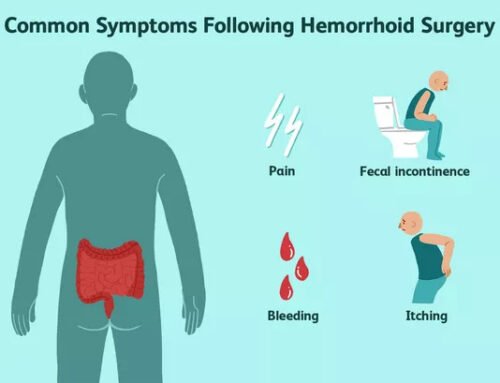
Kshar sutra Top 10 questions answered
Hemorrhoids are classified into three types: hemorrhoids (piles), which are wart-like swellings, anal fissures, which are tears in the skin near the anus, and anal fistulas, which are pus tunnels developing between the end of the bowel and the skin near the anus. Follow all the kshar sutra top 10 questions as mentioned below:
What exactly are the disease piles?
Piles are inflamed and swollen collections of tissue in the anal area. Kshar sutra can have a range of sizes, and Kshar sutra they may be internal or external. Internal piles are normally located between 2 and 4 centimeters (cm) above the opening of the anus, and they are the more common type. External piles occur on the outside edge of the anu
What are the main causes of Piles and Fissures?
Passing large or hard stools is a common cause of anal fissure. Dysphagia and fecal straining Diarrhea are chronic.
What is Kshar sutra Therapy?
Kshar sutra Therapy is a kind of Ayurvedic para surgical diagnosis and is probably the best ayurvedic piles treatment available in India. In his scriptures, the great Indian surgeon Sushruta outlined the utilization of Kshara for the rehabilitation of anorectal fistulas and other anorectal diseases. Sushruta’s work was later consolidated as “Sushrut Samhita” in the 5th century A.D. Acharya Chakrapani Datta (10-11 Century A.D.) and Acharya Bhav Mishra (16-18 Century A.D.) described the method of preparation and treatment of fistula in ano using the Kshara Sutra in their classical Ayurvedic texts (K.S.). It has been used successfully for many years to treat Anorectal Diseases. Kshar Sutra removes disease from the body through “Herbal Chemical Cauterisation.”
The anus is the hole at the bottom of your intestines through which stool exits the body. Anal cancer is uncommon, but when it does occur, it has the potential to spread to other parts of the body. Some noncancerous forms of anal cancer can progress to cancerous status over time. Anal cancer is a rare type of cancer that begins in the anus, the opening at the end of the rectum.
How does this ancient technique work in the case of a fistula-in-ano?
After administering adequate anesthesia, the Kshar Sutra is inserted into the fistulous tract and both ends are fastened together. It is supplanted every week. The Kshar sutra remains in direct contact with the tract, so it physiologically and molecularly curettes and lamellae out its lining, enabling it to collapse and cure. It is a less intrusive and less expensive treatment. Complications are marginal; chances of sphincter control loss and resulting anal incontinence are extremely low.
What is the procedure like?
The patient is kept in a confidential set – up with a good source of illumination in a left lateral position. A magnanimous amount of 2% xylocaine jelly is decided to apply to both the extrinsic entrance and the entire infant feeding tube. To make an indentation, a partial cut 1–2 cm distal to the tip of the infant feeding tube is made. Upon attempting to make an indentation on the penetration side of the infant feeding tube, insert this side of the tube through the external opening. The infant feeding tube is complacently pushed and maneuvered through the fistulous tract. Eventually, the inner segment is found, and the tube is inserted through it with the index finger. When the indented tail end of the infant feeding tube emerges from the internal opening, the ksharsutra is locked at the indentation (towards the internal opening) and pulled across the other end. Finally, the infant feeding tube is detached and both ends of the ksharsutra are tied.
How effective is this treatment?
Kshar sutra therapy is the most efficacious therapeutic approach for ano fistula. Kshar sutra therapy is highly potent and has a low risk of recurrence (3.33 percent). When compared to traditional therapeutic approaches that require hospitalization, regional or general anesthesia, and regular post-operative care, it is a very easy daycare and cost-effective treatment with a low rate of complications. These surgical treatments are associated with a high risk of recurrence (0.7–26.5 percent) and a significant risk of cognitive impairment continence (5–40 percent).
Is Kshar sutra therapy cost-effective compared to other treatments?
The Kshar Sutra treatment is very affordable, with the consultation fee ranging from Rs. 200 to Rs. 300 and the actual treatment costing between Rs. 1500 and Rs. 2,000.
What are other alternatives for piles and fissure treatment?
Open surgery: The most commonly used procedure in the surgical management of hemorrhoids is open surgical hemorrhoidectomy. Hemorrhoidectomy, on the other hand, is associated with substantial ailments such as pain, bleeding, and wound infection, that can lead to a prolonged hospital stay.
Laser Surgery: A laser beam is used in piles or hemorrhoids surgery to incinerate and slim down the hemorrhoids, which are swollen and inflamed anal tissues. It is a form of painless surgery of Piles. The physician directs a slender beam of light at the tissues, disrupting blood flow and allowing the tissues to fall off.
What are some of the precautions/home remedies one can take to avoid causing Haemorrhoids?
- Proper nutrition: Consuming ample fiber-rich foods like fruits and vegetables, as well as whole grains, ensures that stools are almost always soft. Likewise, drinking lots of good fluids aids in the softening of feces. OTC fiber additives can also help with constipation.
- Preventing overstraining: Try not to stress when using the lavatory. This causes pressure to build up in the vessels of the lower rectum.
- Defecating when necessary: If someone needs to use the restroom, they should not wait. The stools will be drier the longer you wait.
- Physical activity: Sitting or standing for long periods puts strain on the veins. Physical activity also helps stool move through the bowel, resulting in more regular bowel movements.
- Keeping a healthy BMI: Being obese has a significant risk of having hemorrhoids.
What should patients look for in hospitals while getting Ayurvedic treatment for Fissures?
- Experience of the doctors: This plays a very vital role since Ksharsutra Therapy is a very complex procedure. Dr. Mukul Patel, who is widely regarded as one of the best doctors in anorectal disease treatment in India, a postgraduate of IPGT & RA, Jamnagar, is the director of Shreyas anorectal hospital and research center. He has extensive experience working primarily in the field of anorectal diseases for over 30 years.
- The credibility of the institution: The number of years in the industry and the quality of medical procedures delivered should also be taken into consideration. Shreyas anorectal hospital & research center, established in 1988 has been treating piles without operation for the last 34 years.
So if you are looking for any queries related to Hemorrhoids and Fissures you can contact them for free consultations which will educate you about your condition and help you make wise choices based on it.




Leave A Comment